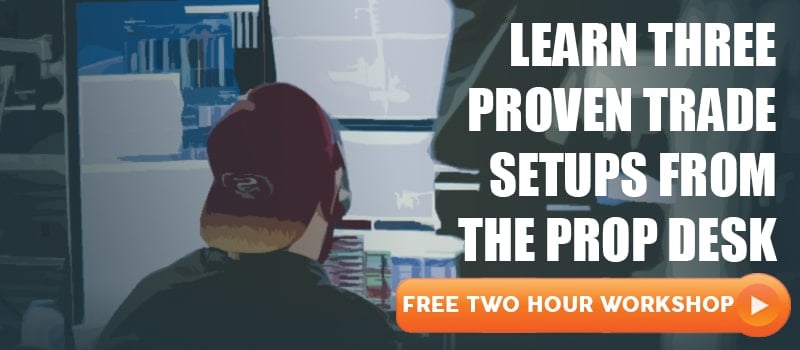Hey Mr. Spencer. I was a participant in the SMB-U webinar on Tuesday morning and I have some clarifying questions I hope you could answer.
1. You discussed the importance of only trading securities with 1/5 risk reward. I understand the concept, but I’m not sure I understand how those levels are quantified. What I thought was being said was that whatever the difference between the current price of the security and historical levels of support should be 1/5th that of the difference between the current price and historical resistance. Is this correct?
Not exactly. When traders think about Risk/Reward we are building a mental model on how much we are willing to risk for each unit of potential upside. For example, if I enter a long position with a stop $1 lower and I believe the upside is $3 the risk/reward is 1/3. The reason we ask new traders to use 1/5 is we expect beginners to have a very low win rate so we want each trade to have a large amount of upside for risk taken. In terms of using historical support/resistance they can be used as potential entries, targets or stops depending on the trade setup. We also will use ATR as a basic measure for determining stops/targets.
2. You mentioned that novice traders should limit themselves to securities that are being traded at a volume of >1,000,000 shares. My understanding at the time this was mentioned was that this was pre-market volume, but in retrospect that doesn’t make much sense to me. Very few securities would move at that volume pre-market. Can you clarify?
In retrospect you’re correct. I was referring to ADV (Average Daily Volume). 1mln is a good starting point for novice traders as this generally provides a sufficient level of liquidity for you to control risk. What I said about pre-market volume was that if a stock does 10%+ of its ADV in the pre-market I would give that weight in deciding whether to trade it that day. Over 50% it would almost automatically be added to my list of stocks to trade that day.
3. What timescale do you and your traders find most useful on candlestick charts? 15 minutes, 5 minutes, etc.
Good rule of thumb is during the first 30 minutes of trading to use 1 or 2 minute bars. After 10AM use 5 minute bars for your lowest time frame chart. I also have a 30 minute chart open at all times to make sure that I’m not losing the forest for the trees. The higher time frame chart is a good visually reminder of the larger intraday trend.
4. I’m currently reading One Good Trade. In the chapter titled “Pyramid of Success” Bellafiore highlights the importance of watching tape, visualization, and other exercises to create repetitions of successful trades. However I’m currently a full time college student. My course schedule this coming fall will only allow me to trade 3 days a week, and limits my time to do these exercises. Do you have any data or intuition on which exercises are most important or efficient?
Visualization and watching tape are both very important. I would say from a time benefit perspective you get more “bang for your buck” from 15 minutes of visualization versus the many hours of watching tape that will be necessary to develop tape reading skills in the long run. Bruce Bower did a great series on visualization a few years ago on the blog.
I discuss much of the above in far more detail in our free two hour workshop.
no relevant positions

